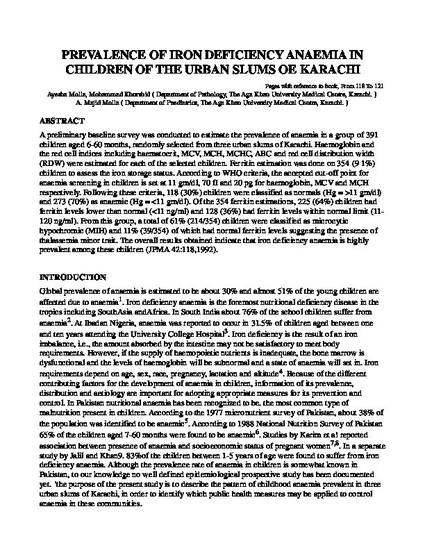
A preliminary baseline survey was conducted to estimate the prevalence of anaemia in a group of 391 children aged 6-60 months, randomly selected from three urban slums of Karachi. Haemoglobin and the red cell indices including haematocrit, MCV, MCH, MCHC, ABC and red cell distribution width (RDW) were estimated for each of the selected children. Ferritin estimation was done on 354 (9 1%) children to assess the iron storage status. According to WHO criteria, the accepted cut-off point for anaemia screening in children is set at 11 gm/dl, 70 fI and 20 pg for haemoglobin, MCV and MCH respectively. Following these criteria, 118 (30%) children were classified as normals (Hg = >11 gm/dl) and 273 (70%) as anaemic (Hg = <11 gm/dl). Of the 354 ferritin estimations, 225 (64%) children had ferritin levels lower than normal (<11 ng/ml) and 128 (36%) had ferritin levels within normal limit (11-120 ng/ml). From this group, a total of 61% (214/354) children were classified as microcytic hypochromic (MIH) and 11% (39/354) of which had normal ferritin levels suggesting the presence of thalassemia minor trait. The overall results obtained indicate that iron deficiency anaemia is highly prevalent among these children
Available at: http://works.bepress.com/mohammad_khurshid/63/
